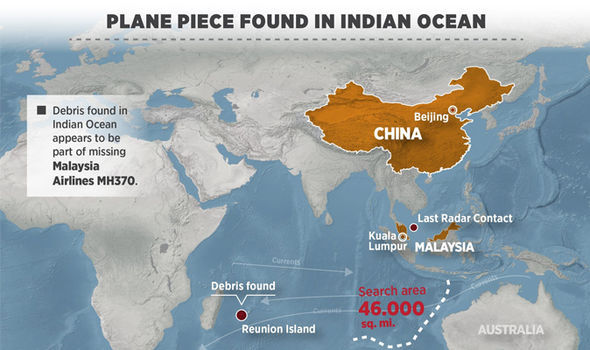angelburst29
The Living Force
This is one of those "odd reports" that you come across - that make little sense but might connect to something, at a later date?
To whom it may concern: please claim your Boeing 747s
http://news.yahoo.com/whom-may-concern-please-claim-boeing-747s-112803730.html
Kuala Lumpur (AFP) – Still puzzled by the mystery of missing flight MH370, Malaysian airport authorities now have the opposite problem:
three Boeing 747 planes left unclaimed at the country’s main airport.
The operators of Kuala Lumpur International Airport (KLIA) have placed a bizarre advertisement in a Malaysian newspaper seeking the owners of three 747-200F aircraft apparently abandoned there.
“If you fail to collect the aircraft within 14 days of the date of this notice, we reserve the right to sell or otherwise dispose of the aircraft” under Malaysian regulations, said the ad which ran in Monday’s edition of The Star.
The notice was addressed to the “untraceable owner” of the planes.
Zainol Mohd Isa, general manager of Malaysia Airports (Sepang), which operates the facility, said the airport had been trying to contact the planes’ last known owners.
He said they were “international” and not Malaysian, but declined to give further details.
“I don’t know why they are not responding. There could be many reasons. Sometimes it could be because they have no money to continue operations,” Zainol said.
In addition to wanting the planes to be claimed, he said the airport is seeking payment from the owners for landing, parking and other charges.
If no payment is received by December 21, the planes will be auctioned or sold for scrap to recoup the outstanding charges.
The notice gave the planes’ registration numbers as TF-ARM, TF-ARN, and TF-ARH. Zainol said two are passenger aircraft and one is a cargo plane.
It is not the first time this has happened at the airport, Zainol added.
In the past decade a few other planes, mostly smaller aircraft, were abandoned.
He said an aircraft that was abandoned in the 1990s was eventually bought and turned into a restaurant in a Kuala Lumpur suburb.
KLIA was the origin of Malaysia Airlines flight MH370, which disappeared after taking off on March 8, 2014 with 239 passengers and crew aboard in what remains one of aviation’s greatest mysteries.
Malaysia earlier this year confirmed that a wing part found on the French island of La Reunion in the Indian Ocean was from the plane. But no further wreckage has been found despite an intensive Australian-led oceanic search.
To whom it may concern: please claim your Boeing 747s
http://news.yahoo.com/whom-may-concern-please-claim-boeing-747s-112803730.html
Kuala Lumpur (AFP) – Still puzzled by the mystery of missing flight MH370, Malaysian airport authorities now have the opposite problem:
three Boeing 747 planes left unclaimed at the country’s main airport.
The operators of Kuala Lumpur International Airport (KLIA) have placed a bizarre advertisement in a Malaysian newspaper seeking the owners of three 747-200F aircraft apparently abandoned there.
“If you fail to collect the aircraft within 14 days of the date of this notice, we reserve the right to sell or otherwise dispose of the aircraft” under Malaysian regulations, said the ad which ran in Monday’s edition of The Star.
The notice was addressed to the “untraceable owner” of the planes.
Zainol Mohd Isa, general manager of Malaysia Airports (Sepang), which operates the facility, said the airport had been trying to contact the planes’ last known owners.
He said they were “international” and not Malaysian, but declined to give further details.
“I don’t know why they are not responding. There could be many reasons. Sometimes it could be because they have no money to continue operations,” Zainol said.
In addition to wanting the planes to be claimed, he said the airport is seeking payment from the owners for landing, parking and other charges.
If no payment is received by December 21, the planes will be auctioned or sold for scrap to recoup the outstanding charges.
The notice gave the planes’ registration numbers as TF-ARM, TF-ARN, and TF-ARH. Zainol said two are passenger aircraft and one is a cargo plane.
It is not the first time this has happened at the airport, Zainol added.
In the past decade a few other planes, mostly smaller aircraft, were abandoned.
He said an aircraft that was abandoned in the 1990s was eventually bought and turned into a restaurant in a Kuala Lumpur suburb.
KLIA was the origin of Malaysia Airlines flight MH370, which disappeared after taking off on March 8, 2014 with 239 passengers and crew aboard in what remains one of aviation’s greatest mysteries.
Malaysia earlier this year confirmed that a wing part found on the French island of La Reunion in the Indian Ocean was from the plane. But no further wreckage has been found despite an intensive Australian-led oceanic search.










